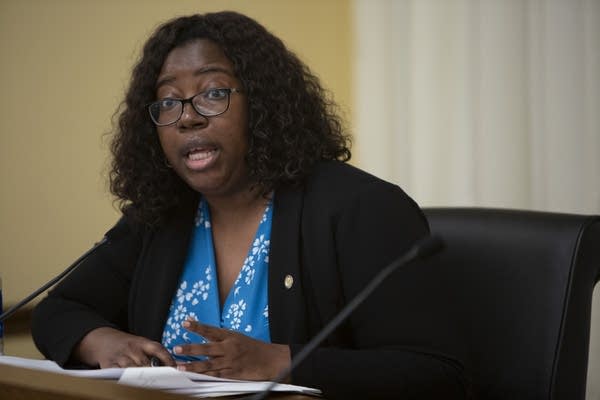Report: Black women and girls disproportionately targeted for violence

Go Deeper.
Create an account or log in to save stories.
Like this?
Thanks for liking this story! We have added it to a list of your favorite stories.
African American women and girls in Minnesota are almost three times as likely to be murdered as their white peers. And while Black women make up seven percent of the state population, a new report found they make up 40 percent of domestic violence victims in Minnesota.
That’s according to data contained in a report from the Missing and Murdered African American Women (MMAAW) Task Force released earlier this month.
After one year of conducting interviews and collecting data from Minnesotans, Rep. Ruth Richardson (DFL- Mendota Heights) said she was not surprised by the findings. It was long overdue for the state to put together these findings to back up what many knew, anecdotally, she said.
“I have a saying, ‘No stories without data, no data without stories,’” said Richardson, who is a member of the task force. “Both of them together are really powerful narratives for change.”
Turn Up Your Support
MPR News helps you turn down the noise and build shared understanding. Turn up your support for this public resource and keep trusted journalism accessible to all.
Some key causes of violence against Black women in the task force’s findings included racism and other remnants of slavery, as well as harmful stereotypes and hyper-sexualization of Black people. The task force also cited low wage employment and financial disparities as contributing factors.
According to the report, Black women have fewer opportunities to save for and find safe, affordable housing, which is one of the most important factors in quality of life and protection from violence.
Overall, the report found systemic racism in various areas of life continues to make African American women and girls less safe.
“It is not one thing, it is a real true intersection of things,” Richardson said. “For example, we know Black girls are less likely to get AMBER Alerts than their peers, they are more likely to be classified as runaways.”
Richardson said these types of disparities amount to a target on Black women and girls.
“Individuals know they will be more likely to get away with something if they target a group of people that are not getting the same type of attention,” Richardson said.
The Minnesota Legislature approved the MMAAW task force in 2021, a first in the nation, following similar efforts directed at Native women. The MMAAW task force included representatives from the Minnesota Legislature, Minnesota Bureau of Criminal Apprehension, law enforcement agencies and Minnesota Department of Health (MDH) among others.
The task force also conducted extensive interviews with African American women and girls, as well as people who work closely with them through various organizations and legal services.
Richardson said those interviews and first-hand accounts provided the foundation for the task force’s recommendations.
Some of the task force recommendations included funding more housing to serve African American women and girls and developing cultural competency training for professionals in the justice system like peace officers, prosecutors and victim services representatives. The task force also recommended establishing an office to support missing and murdered African American women and girls.
The MMAAW task force will next seek approval from lawmakers to form a state office to support ongoing work in many areas in a centralized setting. The state formed The Missing and Murdered Indigenous Relatives (MMIR) Office within the Department of Public Safety Office of Justice Programs after that task force wrapped up.
The MMAAW task force report called for a similar structure but recommended such an office be physically housed in a community space instead of sharing an office with a law enforcement agency, “given the history of harm and distrust with law enforcement and perceived and actual imbalances between funding for reactive law enforcement efforts versus proactive, preventative community-centered efforts to reduce violence against Black women and girls,” reads the report.
“We need to start thinking about what prevention efforts could look like and also thinking about how we resource a system to ensure that there is in fact equal access to justice,” Richardson said.


